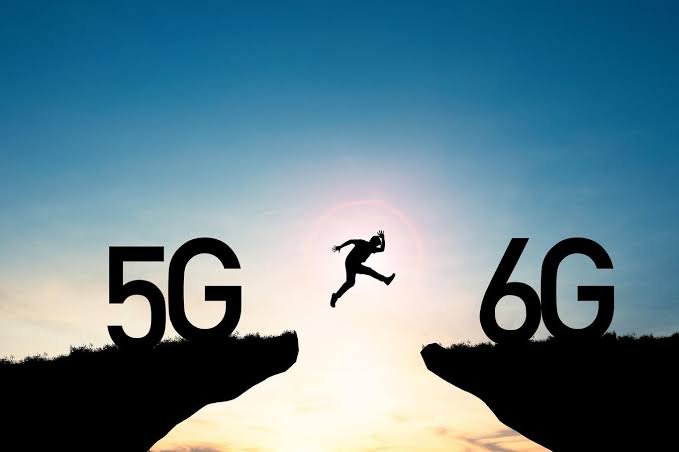Investigating IIT BHU’s Cutting-Edge 6G Network, Driven by Sensor Shells and Expected to Transform Connectivity with Unprecedented Speed and Efficiency.
Located in the historic and culturally significant city of Varanasi, the Indian Institute of Technology Banaras Hindu University (IIT BHU) is leading the way in research on the upcoming 6G wireless communication technology. IIT BHU is advancing with its creative work, seeking to reshape international communication standards as the world continues to integrate 5G networks. Here, we examine in detail the developments at IIT BHU, the revolutionary possibilities of 6G, and its ramifications for both India and the rest of the world.
The IIT BHU 6G Vision
6G represents a revolutionary leap in connectivity rather than just a minor improvement over 5G. 6G is expected to be 100 times faster than 5G and offers ultra-low latency, near-instantaneous data transfer, and unmatched dependability. IIT BHU is at the vanguard of this technological revolution, establishing the groundwork for a network that has the potential to swiftly and effectively connect even the most remote regions of the world.

The vision for this next-generation network is emphasized by Rajesh Kumar Pathak, Director General of 6G in India. He claims that a network driven by sensor shells will replace the conventional reliance on big towers. When 6G is deployed, these robust, lightweight devices will be essential for facilitating seamless connectivity in both urban and rural areas.
Could you explain why 6G is 100 times faster than 5G?
Several technological innovations being investigated at IIT BHU are responsible for the astounding speed of 6G:
- Advanced Spectral Efficiency: 6G makes use of higher terahertz spectrum frequency bands to enable higher bandwidth and data transfer rates.
- AI-Driven Optimization: AI will optimize resource allocation and network traffic, resulting in reduced latency and increased efficiency.
- Satellite Integration: In contrast to conventional networks, 6G will work with satellite systems to deliver uninterrupted worldwide coverage.
- Sensor Shells: By using sensor-based tiny cells, which weigh about 8 kg, large infrastructure will no longer be required, significantly lowering deployment costs and boosting flexibility.
Sensor Shells: 6G Networks’ Foundation
Sensor shells, a ground-breaking idea created at IIT BHU, are small, light devices intended to take the place of conventional cell towers. Commonplace infrastructure, like utility poles and streetlights, can have these shells installed. Among the main characteristics of sensor shells are:
Small and Sturdy Design: Sensor shells are resistant to environmental influences and are simple to install and maintain.
Energy Efficiency: Sustainable operation is ensured by these devices’ low power consumption design.
- Advanced Connectivity: Sensor shells with state-of-the-art technology are capable of effectively managing enormous volumes of data traffic.
The Effect of 6G on Worldwide Connectivity
Industry-wide connectivity paradigms are anticipated to be redefined by 6G. Research at IIT BHU focuses on a number of game-changing applications:

- Smart Cities: 6G’s extremely low latency allows for the smooth operation of smart city infrastructure, such as waste management, traffic control, and surveillance.
- Healthcare: The network’s low latency and high-speed data transfer will make telemedicine and remote surgeries more dependable and accessible.
- Education: Learning will be transformed by platforms based on virtual and augmented reality, which will close gaps in rural and remote areas.
- Agriculture: By using IoT-enabled devices, farmers can monitor livestock and crops in real-time, increasing productivity.
- Defense and Security: By facilitating safe and quick information sharing, advanced communication systems will bolster national defense.
The Contribution of “Made in India” to the Development of 6G
A key factor in the advancement of 6G technology is India’s “Make in India” campaign. IIT BHU is dedicated to making sure that all 6G components, including integrated systems and devices, are created and produced in India. This strategy supports the overarching objective of bringing India to the forefront of global innovation and attaining technological self-reliance.

This indigenous development model will strengthen India’s position as a leader in next-generation communication technology, Rajesh Kumar Pathak underlined. In addition to lowering reliance on imports, domestic manufacturing of 6G systems and devices will open up new job opportunities for Indian workers.
6G Integration of Artificial Intelligence and Satellites
The integration of 6G with satellite systems and artificial intelligence is among its most fascinating features. Researchers at IIT BHU are focusing on:
- AI-Enabled Network Management: AI will be essential to network traffic management, guaranteeing optimal resource allocation and performance.
In contrast to terrestrial networks, 6G will incorporate satellite systems to offer continuous connectivity, even in isolated or disaster-affected areas. - Intelligent Devices: 6G network devices will have adaptive functioning and self-diagnosis capabilities, improving user experience and decreasing downtime.
Leadership in 6G Development in India
India has been keeping up with international communication technology trends for many years. The nation has the chance to take the lead with 6G. With the help of IIT BHU, India will become a leader in innovation and a model for other countries.

Pathak’s statement emphasizes how crucial this change is: “India followed other nations’ lead in 4G and 5G, but in 6G, the world will look to India for innovation and guidance.”
The “Advanced 5G” is **6G.”
Often called “Advanced 5G,” 6G introduces ground-breaking innovations while expanding upon the principles of its predecessor. Important distinctions include:
- Speed 6G seeks to reach speeds in terabits per second, whereas 5G operates in gigabits per second.
Latency: 6G promises almost zero latency, allowing critical applications to communicate in real time. - Coverage: 6G will guarantee worldwide connectivity, even in previously unreachable places, by combining terrestrial and satellite networks.
ABLT Hall at IIT BHU: A Center for Innovation
At IIT BHU, the Advanced Broadband and Light Transmission (ABLT) Hall is a center for innovative research. This location recently hosted the 19th EAI BodyNets 2024 conference, which brought together experts from around the world to talk about developments in wireless communication. This occasion demonstrated IIT BHU’s teamwork in bringing 6G to life.
Difficulties and Opportunities for the Future
Despite 6G’s enormous potential, there are still a number of obstacles to overcome:
- Regulatory Frameworks: It will be essential to establish international standards and laws for 6G.
- Infrastructure Development: It takes a lot of money and creativity to switch from conventional towers to sensor shells.
- Cybersecurity: Protecting 6G networks from possible attacks is of utmost importance.
- Skill Development: The successful deployment of 6G technology will depend on workforce training to adjust to it.
The future appears bright despite these obstacles. India’s dedication to influencing the next phase of communication technology is demonstrated by IIT BHU’s unwavering pursuit of excellence in 6G research.
Conclusion
IIT BHU’s 6G research represents a turning point in India’s technological development. IIT BHU is laying the foundation for a future in which connectivity is limitless by fusing cutting-edge research, local innovation, and a dedication to global leadership. IIT BHU’s contributions will surely be crucial to achieving this ambitious goal as the world waits for the rollout of 6G by 2030.

With 6G, India is aiming to lead rather than just catch up, ushering in a time when the lines separating the digital and physical worlds become less distinct and unimaginable possibilities become possible.







